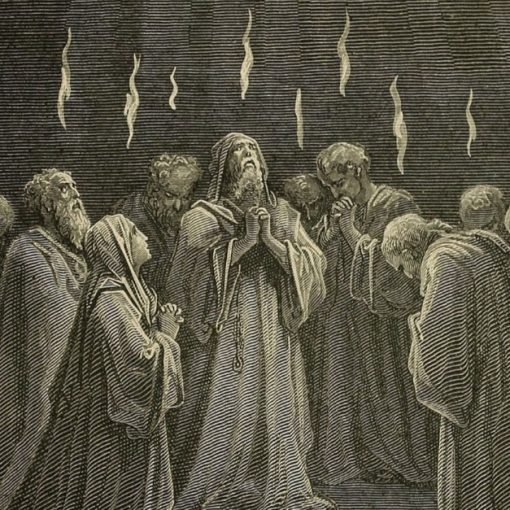Christians often cite 2 Timothy 3:16-17 as the key verse to assert that every word in the modern New Testament is directly “God-breathed” and doctrinally authoritative. This verse reads, “16 All scripture is inspired by God and is useful for teaching, for reproof, for correction, and for training in righteousness, 17 so that the person of God may be proficient, equipped for every good work.” Yet, to assume that Paul was referring to the 66 books of today’s Bible—especially the modern New Testament canon—when he wrote this statement overlooks both the historical context and the early Christian understanding of “scripture.” To fully appreciate the meaning of 2 Timothy 3:16-17, we need to explore the original terminology, early Christian practices and beliefs, and the canonization process.
What Did Paul Mean by “Scripture”?
When Paul wrote to Timothy around A.D. 67, he used the Greek word γραφὴ (graphḗ), which translates to “writing” or “sacred writings” and commonly denotes a specific book or section of Holy Scripture. It was most frequently used to refer to the Hebrew Scriptures—the collection of texts Christians now recognize as the Old Testament. In contrast, the New Testament canon, as we know it today, was not yet established, and many New Testament books had not yet been written. Therefore, Paul’s reference to “Scripture” in this verse likely meant the sacred texts of the Hebrew Bible, which were universally accepted as inspired by both early Christians and Jews.
Paul also used the Greek term theopneustos (translated as “God-breathed” or “divinely breathed in”) to emphasize the divine inspiration of the referenced scripture, though he did not specify any set list of writings. By this point in history—and shortly after, within about 20 years—a variety of other Christian writings were circulating among believers, including some that are now considered non-canonical, alongside Paul’s own letters. However, these Christian writings were not yet held with the same formal status as the Hebrew Scriptures.
All of these facts suggest that interpreting this verse as referring exclusively to the modern Bible canon involves assumptions that do not align with the historical context in which Paul wrote.
The Absence of a Formal New Testament Canon
By A.D. 67, there was no defined New Testament canon. Many early Christian communities primarily used the Old Testament and selectively read and circulated letters and teachings from apostles and early Christian leaders, particularly Paul’s letters and emerging Gospel accounts. The canonization process for the New Testament spanned several centuries, mainly solidifying in the fourth century when councils like Hippo (393 A.D.) and Carthage (397 A.D.) formally recognized the books we know today. During Paul’s lifetime, the early Church relied on both the Old Testament and a variety of Christian writings that some viewed as inspired, though these texts were not yet collectively considered “scripture.”
In the late second century, the Muratorian Fragment—one of the earliest known lists of canonical writings—included most of the New Testament but also contained texts later excluded, such as The Apocalypse of Peter. Many early Christians also revered works like The Shepherd of Hermas, The Epistle of Barnabas, and The Didache, considering them “scripture” and inspired. Although ultimately not included in the final canon, this historical evidence from early Christian communities shows what was considered “scripture,” inspired, or authoritative was broader and much less defined than today’s New Testament canon.
Some Early Christian Texts Considered “Scripture”
There were dozens of texts outside the New Testament that were widely used, respected, and even considered inspired by early Christian communities. For example:
- The Shepherd of Hermas: This text was popular among early Christians, especially in Rome, and is included in the Muratorian Fragment (c. 170 A.D.), an early list of books used by the Church. It was highly respected in the early Church.
- The Didache: Often dated between A.D. 70-100, this text, also known as “The Teaching of the Twelve Apostles,” provided ethical instructions and outlined church practices. It was extremely influential in the early Church, especially in regions such as Syria and Egypt, where many Christians treated it as divinely inspired scripture.
- 1 Clement: Written around A.D. 95, this letter was highly respected and circulated widely in churches, especially in Alexandria, where it was included alongside what became the New Testament texts.
By acknowledging these texts (and others) as “scripture” or, at the very least, inspired and authoritative texts used alongside other modern New Testament books, early Christians demonstrated a broader acceptance of inspiration that went beyond today’s New Testament canon.
The Fundamentalist Perspective and Its Historical Challenges
Modern fundamentalists that claim 2 Timothy 3:16-17 refers exclusively to the current Bible canon have to force themselves to overlook important historical nuances of the historicity of that verse. Paul, in using “all Scripture,” is almost certainly referring to the Hebrew Scriptures, as the New Testament canon had not even remotely been established. At this point in time, Christians were using a conglomeration of many different early texts they considered inspired or sacred to guide them. Insisting that this verse referred to the entire New Testament, as understood today by many Christians, effectively suggests that early Christians—including those who walked with the apostles—were mistaken about what constituted “scripture” or inspired texts. This modern fundamentalist stance implies that today’s interpretation of scripture and what is inspired is more accurate than that of the early Church, even though early Christians respected several texts that are now considered non-canonical—texts that most people today would not even recognize the names of.
This creates a significant logical inconsistency. If we adopt the modern fundamentalist interpretation, then the earliest Christians—those closest to Jesus and the apostles—would be seen as wrong, even sinful, in their understanding and use of scripture and early texts. Such a perspective disregards the early Church’s foundational understanding of Christianity, the beliefs of early Christian communities, and what those closest to Jesus and the apostles considered to be divine teaching, revelation, and inspired scripture.
The Development of the Canon Was Not Immediate or Uniform
The process of canonization was not a quick or divinely dictated event; rather, it was a gradual accomplishment driven by the Christian community over hundreds of years (see the previous post for more on this). The New Testament canon took shape over centuries as early Christians evaluated texts based on their origins, doctrinal consistency, and widespread acceptance. Even then, there was an ongoing debate over what should be considered canonical. Works like The Apocalypse of Peter, The Shepherd of Hermas, and The Didache were widely used by many early Christians, who viewed them as sacred and beneficial texts, but they were later excluded when the canon became more formalized. This thoughtful, time-intensive process demonstrates that early Christians did not begin with a rigidly defined canon following Jesus’ death and the spread of Christianity.
The historical complexity surrounding these texts illustrates the risks of using 2 Timothy 3:16-17 as a strict proof text to support one’s interpretation of the authority of the modern Bible canon. Even if we assume that Paul’s reference to “scripture” extended beyond the Old Testament, the term “scripture” in his context encompassed a far broader and more varied set of texts than it does today.
Conclusion: 2 Timothy 3:16-17 in Its True Context
To faithfully and logically interpret 2 Timothy 3:16-17, Christians need to recognize that Paul was likely referring to the Hebrew Scriptures and, possibly, some emerging Christian writings that were respected but not yet canonized as universal scripture. Using this verse as a tool to assert the exclusive authority of an individual’s interpretation of what is inside the modern Bible canon is, therefore, historically and contextually flawed. The early Church’s acceptance and use of scripture show a broader understanding of inspiration and authority than what is often presented by modern fundamentalists.
By respecting and exploring this historical context, Christians can gain a more nuanced appreciation of scripture’s role in early Christianity. Rather than reducing our modern understanding of “scripture” to a fixed set of texts formed by other Christians, we should expand our knowledge to include what early Christians considered and used as their guiding set of texts. Christianity is a process—an evolving journey of people striving to spread the message and knowledge of Christ. They used their voices and pens to convey their faith as best as they knew how, relying on various writings that guided them and their community.
We should do our best to honor the organic, community-led formation of the Bible as we know it today, without imposing modern expectations onto the early Church’s understanding of sacred writings.




